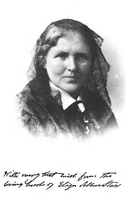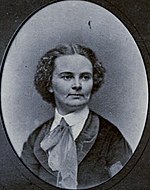
The World's Columbian Exposition was a world's fair held in Chicago from 5 May to 31 October in 1893 to celebrate the 400th anniversary of Christopher Columbus's arrival in the New World in 1492. The centerpiece of the Fair, held in Jackson Park, was a large water pool representing the voyage Columbus took to the New World. Chicago had won the right to host the fair over several other cities, including New York City, Washington, D.C., and St. Louis. The exposition was an influential social and cultural event and had a profound effect on American architecture, the arts, American industrial optimism, and Chicago's image.
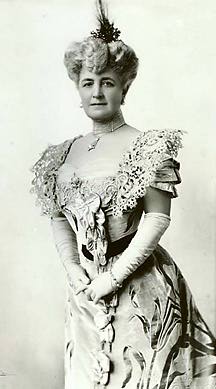
Bertha Matilde Palmer was an American businesswoman, socialite, and philanthropist.

Harriet Goodhue Hosmer was a neoclassical sculptor, considered the most distinguished female sculptor in America during the 19th century. She is known as the first female professional sculptor. Among other technical innovations, she pioneered a process for turning limestone into marble. Hosmer once lived in an expatriate colony in Rome, befriending many prominent writers and artists.

The Isabella quarter or Columbian Exposition quarter was a United States commemorative coin struck in 1893. Congress authorized the piece at the request of the Board of Lady Managers of the World's Columbian Exposition. The quarter depicts the Spanish queen Isabella I of Castile, who sponsored Columbus's voyages to the New World. It was designed by Bureau of the Mint Chief Engraver Charles E. Barber, and is the only U.S. commemorative of that denomination that was not intended for circulation.

Anne Whitney was an American sculptor and poet. She made full-length and bust sculptures of prominent political and historical figures, and her works are in major museums in the United States. She received prestigious commissions for monuments. Two statues of Samuel Adams were made by Whitney and are located in Washington, D.C.'s National Statuary Hall Collection and in front of Faneuil Hall in Boston. She also created two monuments to Leif Erikson.
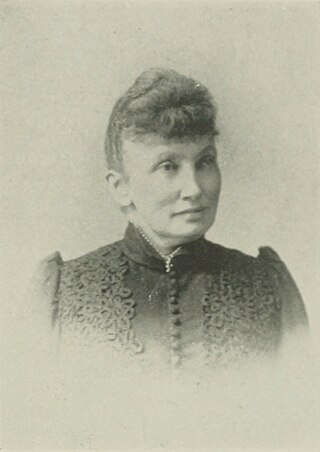
Matilda B. Carse was an Irish-born American businesswoman, social reformer, publisher, and leader of the temperance movement. With Frances E. Willard and Lady Henry Somerset, Carse helped to found the Woman's Christian Temperance Union (WCTU).

Eliza Allen Starr was an American artist, art critic, teacher, and lecturer. She was known throughout the United States and Europe for her books about Catholic art.
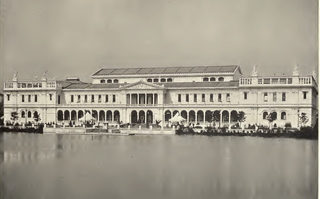
The World's Congress of Representative Women was a week-long convention for the voicing of women's concerns, held within the World's Congress Auxiliary Building in conjunction with the World's Columbian Exposition. At 81 meetings, organized by women from each of the United States, 150,000 people came to the World's Congress Auxiliary Building and listened to speeches given by almost 500 women from 27 countries.
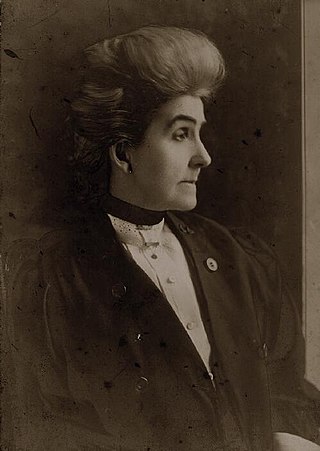
Phoebe Wilson Couzins was one of the first female lawyers in the United States. She was the second woman to serve as a licensed attorney in Missouri and the third or fourth to be a licensed attorney in the United States. She was the first woman admitted to the Missouri and Utah bars, and was also admitted to the Kansas and Dakota Territory bars. She was the first female appointed to the U.S. Marshal service. After her career in law, she played an active part in the Suffrage movement.

Indiana is a public artwork by Retta T. Matthews of Arlington, Indiana that was originally displayed in the Indiana State Building at the 1893 Chicago World's Fair. The sculpture is currently located on the fourth floor of the Indiana Statehouse in downtown Indianapolis, Indiana, USA.

Sarah Tyson Hallowell or Sara Tyson Hallowell was an American art curator in the years between the Civil War and World War I. She curated a number of major exhibitions in Chicago, arranged the loan exhibition of French Art at the World's Columbian Exposition in Chicago, and worked with Bertha Palmer (1849–1918) to organize the murals for the women's pavilion for the fair. She then moved to Paris, where she served as agent for the Art Institute of Chicago. During World War I she and her niece Harriet Hallowell (1873–1943) volunteered at a small hospital. She lived in France until her death in 1924.
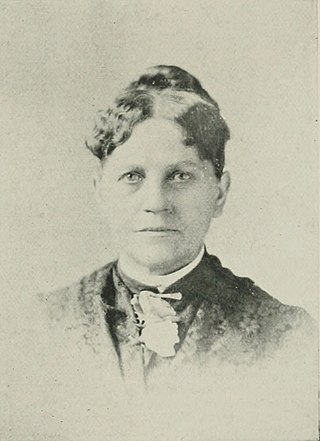
Catharine Van Valkenburg Waite was a United States author, lawyer, businesswoman, and women's suffrage activist.
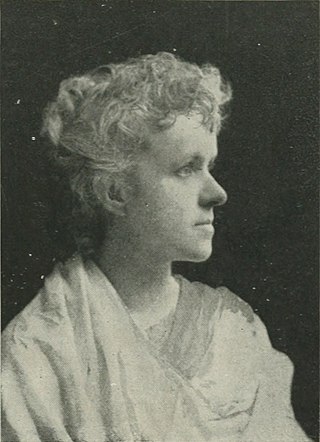
Ellen Rankin Copp, also called Ellen or Helen Houser Rankin, was an American sculptor. Her works were featured at the World's Columbian Exposition in Chicago in 1893.
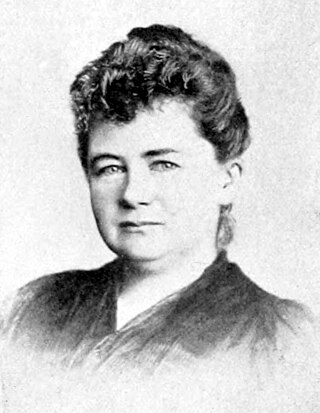
Corinne Stubbs Brown was an American Marxist social activist.

The Woman's Building was designed and built for the World's Columbian Exposition held in Chicago in 1893 under the auspices of the Board of Lady Managers. Of the twelve main buildings for the Exhibition, on June 30, 1892 The Woman's Building was the first to be completed. It had exhibition space as well as an assembly room, a library, and a Hall of Honor. The History of the World's Fair states, "It will be a long time before such an aggregation of woman's work, as may now be seen in the Woman's Building, can be gathered from all parts of the world again."
Frances M. Goodwin (1855–1929) was an American sculptor born in Newcastle, Indiana. Goodwin began her studies in Indianapolis, briefly studying at the Indiana Art Association, and then at the Chicago Art Institute where she studied with Lorado Taft and then at the Art Students League under Daniel Chester French.

Mary Blatchley Briggs was an American writer and women's organizer of the long nineteenth century. She served for eleven years as assistant secretary, superintendent, and reporter for the press, and manager of county, state and inter-state fairs. In addition to publishing a volume of poems, she served as secretary of the Western Art Association of Omaha, Nebraska, retiring on January 1, 1891. Briggs was active in organizing woman's work, and also a writer of descriptive matter of the expositions and like areas in which she was interested. Her best known exposition work was for the world's fair at Chicago, where she was one of the two Nebraskans on the Board of Lady Managers of the World's Columbian Exposition and did much toward organizing the Nebraska women for their work for the state and children's building. She managed getting up the representation for her state at New Orleans.
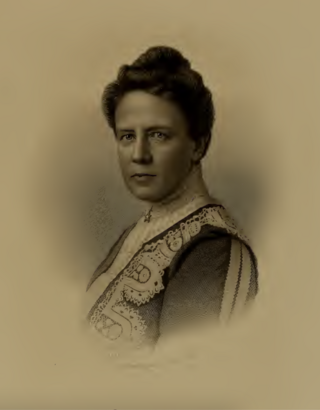
Frances Dickinson was an American physician and clubwoman who specialized in ophthalmology. Dickinson was the first woman received into the International Medical Congress (1887). In addition to being an active member of several medical societies, she was also a prominent woman's club participant, philanthropist, writer, and speaker.

Jean Pond Miner Coburn (1866–1967) was born in Menasha, Wisconsin. She studied at the Art Institute of Chicago, and is most notable for her work Forward.

The Board of Lady Managers of the World's Columbian Exposition was organized November 19, 1890. It oversaw the construction of The Woman's Building in Chicago and organized the exposition's World's Congress of Representative Women (1893). A cookbook with autographed recipes of board members was also issued.


